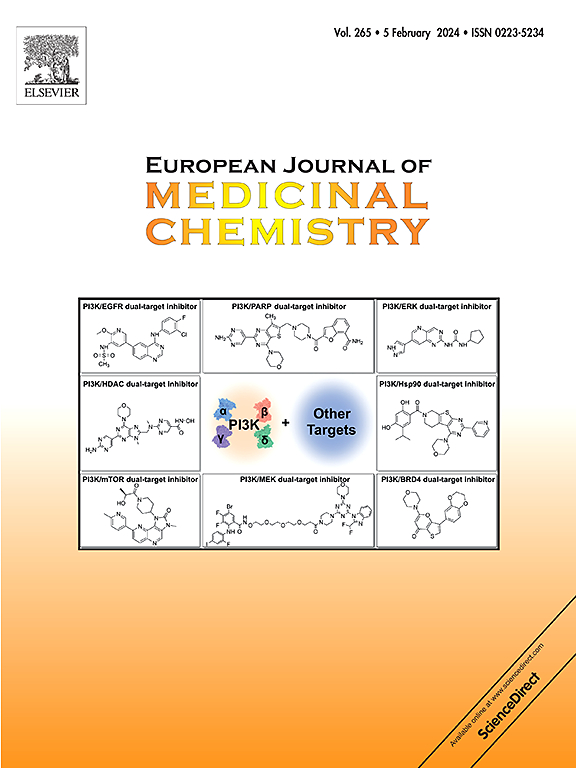Discovery and exploration of disubstituted [1,2,5]oxadiazolo- [3,4-b]pyrazines as novel C-C chemokine receptor type 5 signaling inhibitors targeting the intracellular allosteric binding pocket
IF 6
2区 医学
Q1 CHEMISTRY, MEDICINAL
引用次数: 0
Abstract
The C-C chemokine receptor type 5 is a G protein-coupled receptor expressed on various immune cells, playing a crucial role in inflammation and chemotaxis. Beyond its physiological functions, C-C chemokine receptor type 5 is implicated in numerous diseases, including cardiovascular, central nervous system, immune system, and infectious diseases, as well as in the progression of cancer. The therapeutic potential of C-C chemokine receptor type 5 inhibition has been demonstrated by antagonists targeting the extracellular domain, notably maraviroc, a Food and Drug Administration-approved Human Immunodeficiency Virus entry inhibitor. However, challenges such as suboptimal pharmacokinetics and efficacy necessitate new antagonists with unique modes of action. Recent advancements in G protein-coupled receptor structural characterization have identified a novel intracellular allosteric binding site in chemokine receptors. This study introduces a series of disubstituted [1,2,5]oxadiazolo-[3,4-b]pyrazines targeting the intracellular allosteric binding pocket of C-C chemokine receptor type 5. Among these, compound 3ad emerged as a promising C-C chemokine receptor type 5-selective allosteric antagonist with an half-maximal inhibitory concentration of 1.09 μM and an almost 30-fold selectivity over C-C chemokine receptor type 2. Molecular dynamics simulations and a competition assay with a Gαq11 mimetic were used to confirm the intracellular binding mode of these compounds. This novel class of C-C chemokine receptor type 5-selective intracellular antagonists offers a foundation for developing molecular tools and therapeutic agents, potentially overcoming the limitations of current extracellular C-C chemokine receptor type 5 antagonists.


求助全文
约1分钟内获得全文
求助全文
来源期刊
CiteScore
11.70
自引率
9.00%
发文量
863
审稿时长
29 days
期刊介绍:
The European Journal of Medicinal Chemistry is a global journal that publishes studies on all aspects of medicinal chemistry. It provides a medium for publication of original papers and also welcomes critical review papers.
A typical paper would report on the organic synthesis, characterization and pharmacological evaluation of compounds. Other topics of interest are drug design, QSAR, molecular modeling, drug-receptor interactions, molecular aspects of drug metabolism, prodrug synthesis and drug targeting. The journal expects manuscripts to present the rational for a study, provide insight into the design of compounds or understanding of mechanism, or clarify the targets.

 求助内容:
求助内容: 应助结果提醒方式:
应助结果提醒方式:


